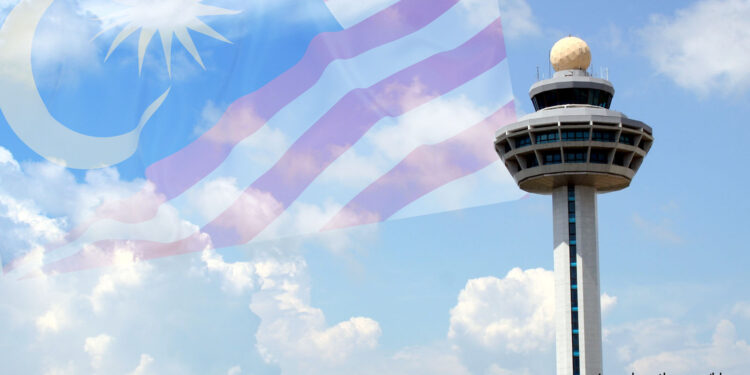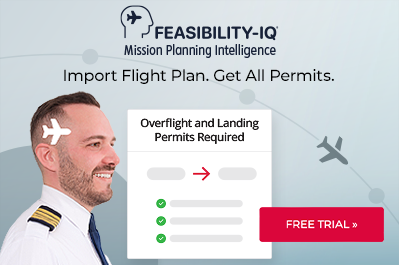Kuala Lumpur – Which Airport to Choose

Corporate traffic to Kuala Lumpur Malaysia remains strong with steady movements. Both area airports, available to general aviation (GA), are convenient and good options although each has its pros and cons to consider.
The following is an overview of what you need to know:
1. Kuala Lumpur has three airports
Although Simpang (WMKF) is not available to GA there are two good airport options for Kuala Lumpur. Sepang (WMKK) is the main international airport for Kuala Lumpur and this airfield is primarily set up for scheduled commercial traffic. Sultan Abdul Aziz Shah (WMSA) is geared toward GA activity and close to downtown. However, it cannot handle larger wide body aircraft, so it’s best to check in advance.
2. WMSA is closer to central Kuala Lumpur
WMSA, located west of the city, is about a 35 minute drive (32 km) into central Kuala Lumpur. WMKK, to the south of the city, is approximately a 50 minute drive (68 km) into central Kuala Lumpur. There is also a high-quality expressway between this airport and the city center.
3. Permit and airport slot requirements
Landing permits are required for all operations to Malaysia. Private non-revenue permits usually take three business days to process, but charter (non-scheduled commercial) permits requires a minimum of two to four weeks lead time. The longer notification period for charter permits is because the Civil Aviation Authority (CAA) must pass on permit requests to the Transport Ministry which vets all charter and scheduled airline permit applications. Airport slots are necessary for WMKK and should be requested along with your landing permit. Once a landing permit is approved for WMKK, the airport slots are confirmed. WMSA does not require airport slots; however, operators should request aircraft parking as early as possible.
4. Operating considerations/restrictions
Operations to WMSA require power in/push back for aircraft parking and operators should have a tow bar onboard. Note that CIQ, and the general aviation terminal (GAT), closes between 1500-2300 local, and prior arrangements must be made for operations during these hours. Aircraft parking is limited at WMSA, and parking should be requested well in advance. Most corporate aircraft will be parked at the GAT, but larger business jets are usually assigned remote parking. WMKK has 75 parking bays – fitted with aerobridges – and 31 remote parking bays. International GA flights are usually parked at a satellite building. It’s recommended that all operators have a tow bar onboard. Plenty of parking is available at WMKK, and there are usually no issues at this location with long term aircraft parking. Both airports are in good condition in terms of tarmac, taxiways and runways. GA aircraft are not relocated, or repositioned, at either airport without advance notification to crew. Note that hanger space for transient aircraft is limited at both airports.
5. No curfews or noise restrictions are currently in place
Both WMSA and WMKK are 24 hour airports of entry (AOE) and do not have any curfews or noise restrictions at this time.
6. CIQ considerations
For WMSA, passengers and crew clear customs at the GAT. Clearance at WMKK is via the main terminal; however, crew have the option of using a “crew lane” at this facility. Passengers making international arrivals at WMKK may book a special VIP room, with advance notification, for CIQ clearance. No fees are associated with CIQ clearance at either location. Planeside clearance is not an option at either WMSA or WMKK.
7. Know documentation requirements
No immigration/customs forms are required for Malaysia, but the country does use a biometric finger print scanning system to track arrivals. Passengers and crew must present passports with a remaining validity of at least six months. If passengers or crew have recently visited any yellow fever endemic country in Africa or South America-or if they plan on traveling to one after Malaysia-they must also present a valid and stamped yellow fever vaccination certificate. The Ministry of Foreign Affairs in Malaysia maintains a list of yellow fever endemic countries.
Visa requirements for Malaysia vary depending upon nationality. For WMKK only, crew of all nationalities do not require visas so long as their names are listed on the general declaration, they’re wearing uniforms, and holding a valid crew ID. They’ll clear customs via the crew lane and be issued a crew slip pass. Note that if passengers are carrying large amounts of taxable goods or equipment this should be declared under a customs ATA carnet. No taxes will be due if these items are taken out of the country with the passenger.
8. In-flight catering tips
There are no agricultural regulations preventing operators from bringing onboard catering into the county. Catering may be delivered to departing aircraft from either major hotels or airline caterers. Note that pork products are prohibited. WMKK has an on-field caterer while in-flight catering for WMSA is sourced from outside the airport. Catering menus are available from in-flight caterers at both locations.
9. Hotel and local transport suggestions
Kuala Lumpur has a wide selection of 4- and 5-star crew accommodation options, including major international hotel chains. Rental car facilities are available inside the terminals at both airports. It’s recommended that crews use either prearranged transport (with driver) or local taxis vetted by the ground handler. At WMSA it’s possible for vehicles to pick up/drop off planeside. This is only an option at WMKK for very special flights (i.e. diplomatic) with ramp access requested in advance.
10. Major airports in Malaysia are secure
Generally, all Malaysian airports have adequate security. Additional security is not usually recommended for aircraft, passengers, or crew.
Conclusion
When operating to the Kuala Lumpur area best practice is to begin working with your 3rd-party provider and local ground handler early. Be aware of extended lead time requirements for charter permits. While WMSA is closer to the city center, and more GA focused, aircraft parking availability is more of a consideration at this location.
Questions?
If you have any questions about this article, contact Louis Smyth at louissmyth@univ-wea.com.




